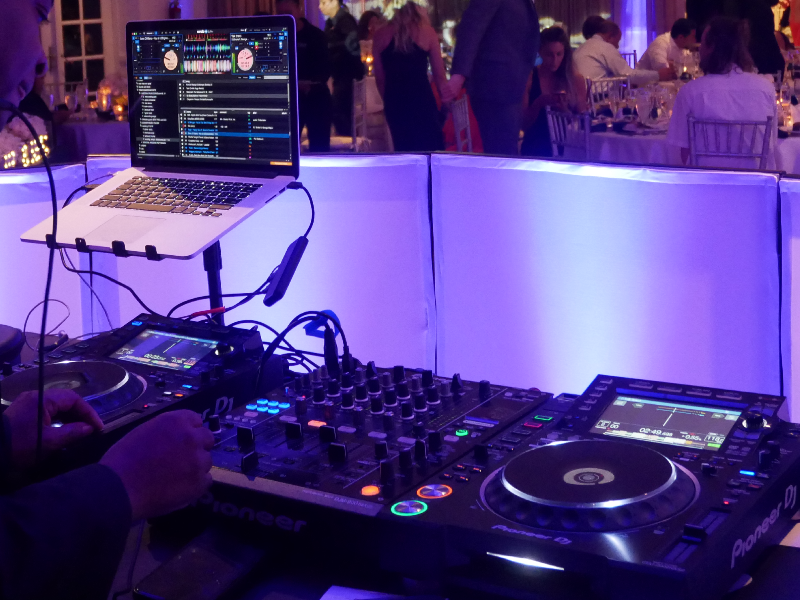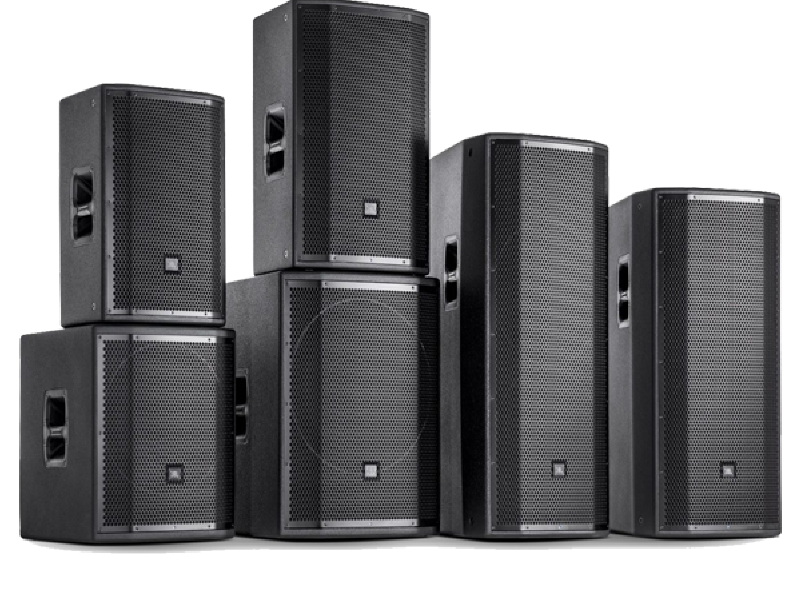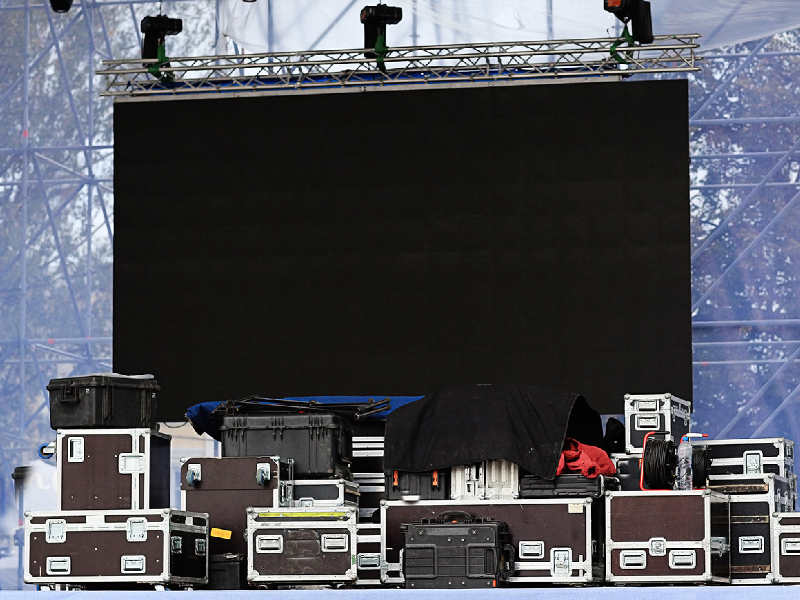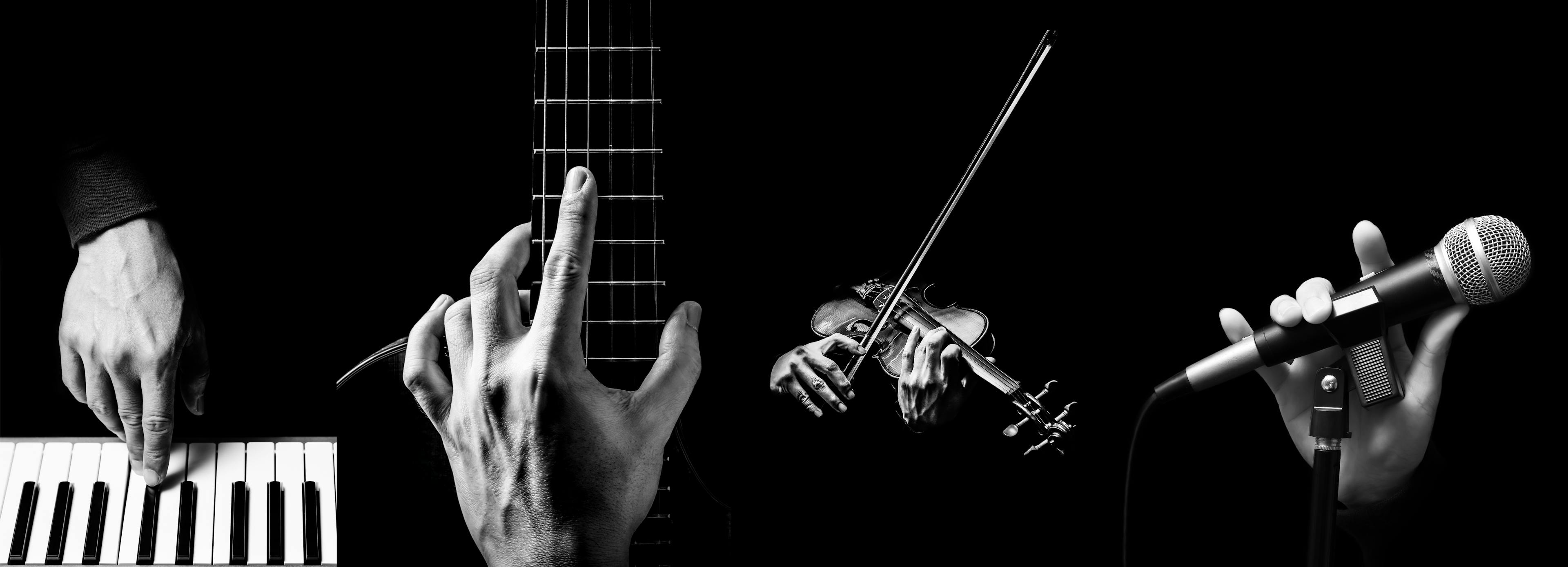What do You Need for a Wedding DJ Setup?
Wedding DJDJ Setup
Selecting the right DJ Equipment
You don’t need a bunch of expensive DJ equipment and lighting to to create an amazing entertainment experience at a wedding.
Many DJs and couples get confused when building or renting the perfect wedding DJ setup: DJ deck, sound and speakers, lighting, staging, special effects… Some items are a must while others are spectacular, but also optional. Additional items are simply not worth it at all.
Let's go over what to look for when preparing the perfect wedding DJ setup:
DJ Deck
A DJ deck is the base of any DJ setup. DJ decks serve two purposes: playing tracks (songs) and mixing them. Back in the day, the only option you had was turntables and a mixer, but thanks to digital technology, there are many different ways of mixing music today:
- Turntables and Mixer: Old school DJing, only recommended for hip hop and scratch enthusiasts. If you want to have flexibility and variety in your music selection (and most times you will for a wedding), this option is not recommended.
- CDJs and Mixer: CDJs are versatile CD players that also can play music from a flash drive or through a connection to a laptop, making them considerably more flexible than turntables. CDJs are the preferred option for professional DJs and are considered the industry standard in clubs. However, their price and bulkiness make them a rare sight in mobile DJ setups.
- Controllers: Controllers are by far the most popular DJ deck for a wedding. Controllers work together with a laptop to mix music digitally with some kind of DJ software (Traktor , Serato …). They are the cheapest option and the easier to carry and set up. In addition, since it is the laptop playing the music, it allows last minute requests to be downloaded and played easily.

Sound / Speakers
There are a few variables to be considered when selecting the appropriate sound for an area. How many guests will be in attendance? How big is the space? Will the music be played in an indoor or outdoor space? You do not want to spend lots of money on a sounds system that will be working at 20% capacity due to a miscalculation. However, on the other hand, you also do not want the music to be drawn out by the chatter of the wedding guests. A set of two 1000 to 1500 watts speakers will usually be enough for a small (50 - 150 people) indoor wedding. Bigger spaces, or outdoor weddings, require more sound. After a certain point, you will probably want to add a subwoofer to the setup.
It is also important to have monitors. Monitors are speakers that will be facing the DJ and help him or her monitor the sound being produced. Any speaker can be a monitor, but usually these speakers are selected for their sound quality, not their power.

Lighting
Unless the wedding happens outside during the day, good lighting is a key part of any wedding DJ setup. The lighting should have the ability to be controlled on demand, adapting the colors and luminosity of every light fixture at once and without delay. You can achieve this with a DMX controller, which will let you synchronize and control every light from the DJ booth. The main components of a light show are:
- Uplighting: Uplights are fixed lights that illuminate the walls, trees, other parts of the dance floor. They also help reinforce the color theme of the wedding. You can choose to leave them set on one color or to synchronize them with other parts of the light show.
- Moving heads: Moving heads are light f ixtures that move, giving a dynamic feel to the light show. Moving heads can be beams (beams of light of different colors ) or display gobo projections. Gobos project different figures and shapes and allow for custom gobo displays to be shown against the wall or floor. At a wedding, a customized gobo usually depicts the couple's initials or the date of the wedding. It is really important that the moving heads are synchronized by DMX. Otherwise, they will run independently creating a very chaotic unorganized light show.
- Visuals: Technically, visuals can be played on flat screen TVs, projectors, or LED panels. However, in practice, they only look good when played on LED panels. TVs and projectors can look cheap and do not typically fit within the ambiance of a wedding. On the other hand, visuals displayed on LED panels look awesome, but can be pricey. For this reason, they are typically an option for a wedding with a higher budget.

Staging
Finally, we come to staging, which is what brings everything together for the big day.
- DJ Booth: the booth is the place where the setup will be installed and where the DJ plays. There will be lots of cables and connections here, especially if you are also controlling a light show. That is why having a DJ Facade that covers everything is a must.
- Truss: Truss are metal modules used to build all kinds of structures. The truss structure is used to set the moving heads, hang LED panels, and speaker arrays. The most typical structures built with truss are totem poles, goalie posts and cubes.
- Stage Risers: Stage risers are portable modules that can be assembled together to build a stage. The DJ booth is typically set on top of the risers. Stage riser modules are usually 4’x4’ with a variable height of 12’’ / 24’’. Be sure to include a stage skirt to cover the undercarriage of the stage!
- Special Effects: Special effects include sparklers, fog machines, and fireworks. They are expensive, have limited use (they require refills), and usually require an additional technician to operate. You can get better results by investing in additional lighting for a fraction of the cost.

